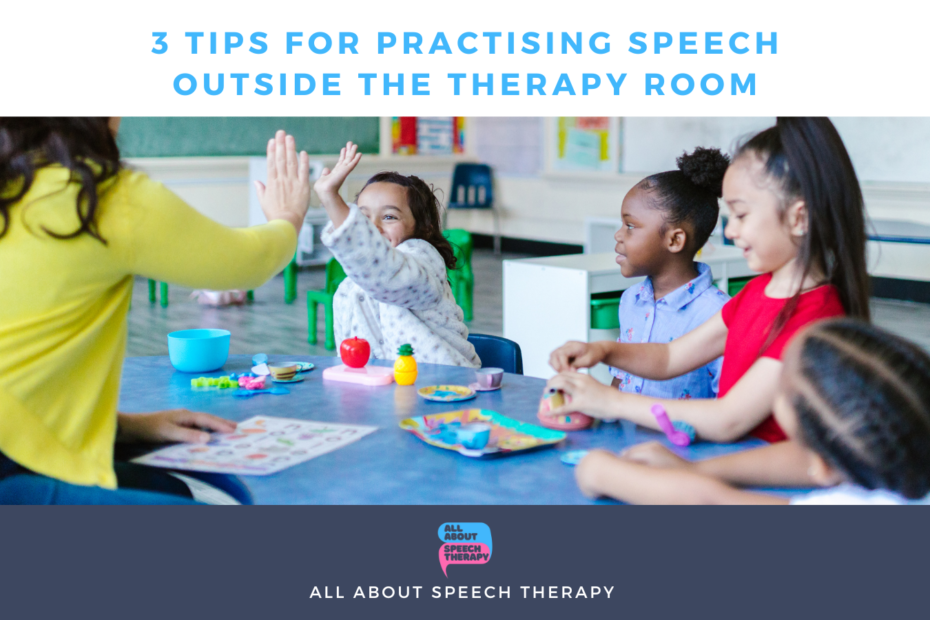One of the conversations I have had several times recently is how to make the most of everyday situations to practise speech. When it’s general communication approaches or language development, it’s so much easier to weave in strategies to the classroom or home routines, but speech sounds tend to be rehearsed in discrete sessions and unrelated to everything else.
The following 3 tips come from Mrs B – a teacher who manages to support individual children’s speech goals every day without extra ‘sessions’.
Tip 1 – Make Sure Everyone Knows
The first thing Mrs B did was to make sure everyone knew what the goals were. It sounds obvious, but sometimes speech goals remain hidden within the therapy room, so the children and the staff talked regularly about their goals.
As a result, not only the adults but also the other children would help to spot target sounds during the day, act as prompters and cheerlead each other with each speech success.
Tip 2 – Reading and Speech are Friends
A great way to work speech practice into lessons is to remember that reading and speech go hand in hand.
Mrs B gave all the children speech bookmarks as reminders of their target sounds, so that every time they read their books they would use the time to also work on their speech production.
Sometimes, seeing the sounds written down acts as an extra cue, as well as reading being helpful for the children who might otherwise rush their speech. It helps to slow speech down and children will think more carefully about the sounds they use. Generally, extra focus on literacy skills will boost speech too.
Tip 3 – Make it Fun!
Mrs B saved the best tip for last – make it fun! This was the case for all the children’s targets, so it was also true for speech. The more the children had fun the better they learned and the quicker they made progress. Did this mean they no longer needed to have dedicated therapy sessions? Not as such. Mrs B found that the children learned their new skills best in a quieter individual space, but then the consolidation practice would work well in the classroom, helping them to grow in confidence with their new speech skills.
Following these 3 tips has helped Mrs B support many children with speech in her classroom over the years, and they remind us that we can do our speech therapy beyond the therapy sessions.
Supporting and empowering others to help children’s speech beyond the therapy room is something we love to do at All About Speech Therapy, through our online coaching and supervision, our books and the Autism Apraxia Toolkit Program.
Did you know we are soon going to be opening doors to our brand new AAST Membership options? Be among the first to sign up and help shape the way we support and empower even more of our amazing parents, carers and educators – just click on the button below!
